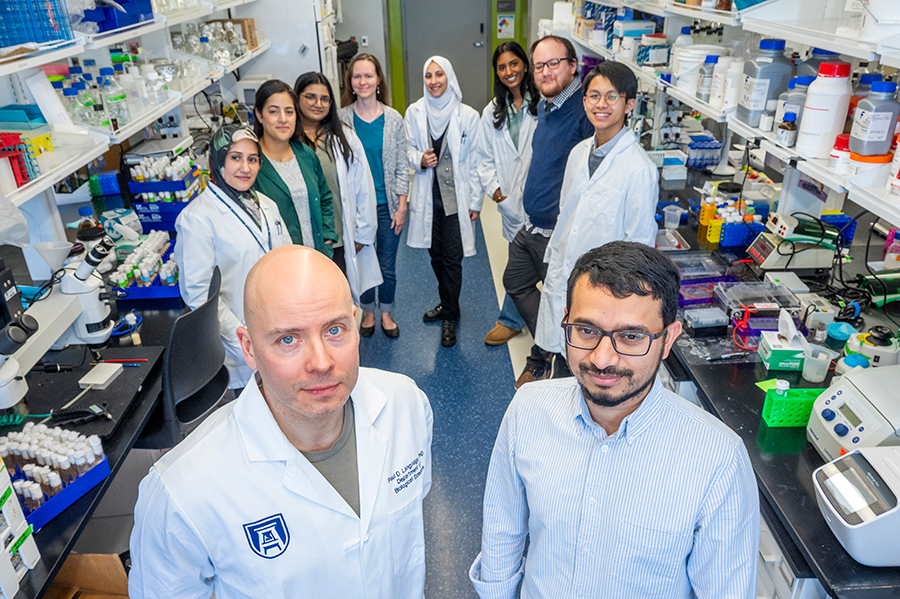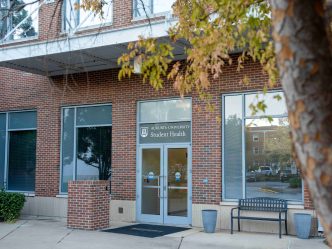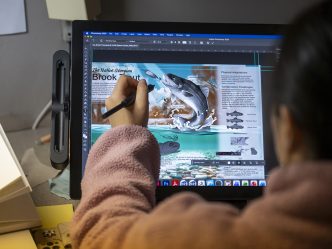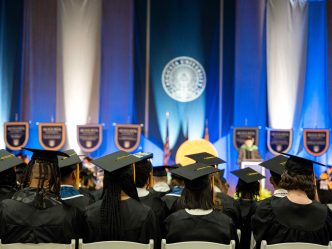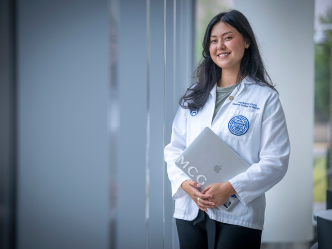Scientists at Augusta University are making an impact in the world of biophysics.
Research spanning about three years conducted by teams at Langridge Lab and Malmi-Kakkada Lab, both in AU’s College of Science and Mathematics, was published in a recent issue of Biophysical Journal, a bi-weekly, peer-reviewed scientific journal.
The article, titled “Contact area and tissue growth dynamics shape synthetic juxtacrine signaling patterns,” explores how cells communicate with one another.
Not only that, but a striking microscopy image taken by one of the team members was used as the cover photo for the issue.
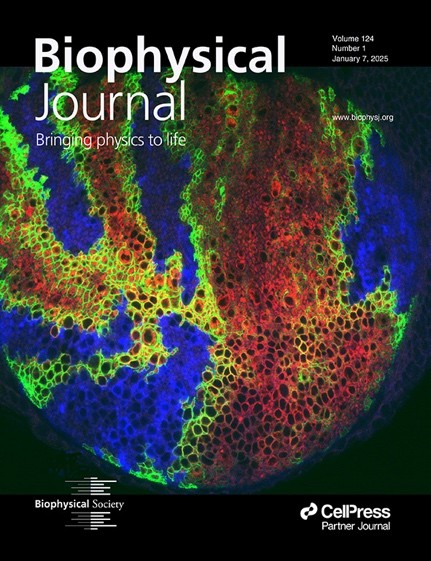
“The idea of the research was really to find out what are the most important things when you actually look in a tissue that determine how communication takes place,” said Paul Langridge, PhD, an assistant professor in AU’s Department of Biological Sciences and team lead at Langridge Lab.
Cells in all multicellular animals use something called a Notch receptor to send signals to each other. The receptor forms a bridge with ligands, which are molecules on the surface of neighboring cells. Once the bridge is formed, the receptor is detached, allowing an activator to access target genes.
Langridge and his team developed a synthetic way to imitate the communication between cells in a tissue.
“The benefit of that is we can strictly control the communication, so that it doesn’t interact with any of these other components that are involved in communicating other messages,” Langridge said. “It’s just one particular message we’re looking at amongst the whole background of what’s normally taking place, so we can dissect out exactly what’s happening with that message.”
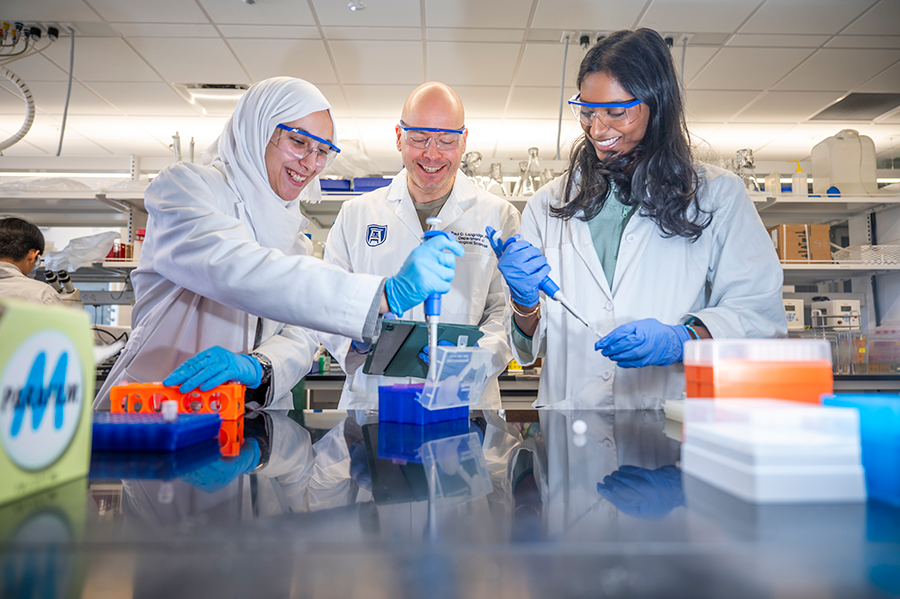
Studies reveal dysregulation of the Notch receptor in nature can cause diseases like cancer.
While Langridge’s work is solely for research purposes and to answer the fundamental questions of biology, he said it could also be translated over into the medical field to possibly counteract these diseases.
“Other people are actually using these sorts of artificial receptors to fight cancer,” Langridge said. “There’s a whole company that uses these synthetic notch receptors to make T-cells so that they can better target tumor cells, for example. T-cells are immune cells, so the idea is to design immune cells that can hunt down and grab tumor cells and kill them more effectively.”
Much of Langridge Lab’s work is done using Drosophila, or fruit flies.
“Fruit flies are good for looking within tissues. In tissues, things are a lot more complex because these things are growing. There’s lots of signals between different molecules, and at the molecular level, the processes we’re looking at are basically the same in a fly as they are in humans,” Langridge said. “So, it makes sense to look at a fly which can produce, in 10 days, a whole new organism. You get lots of material to look at under the microscope very quickly.”
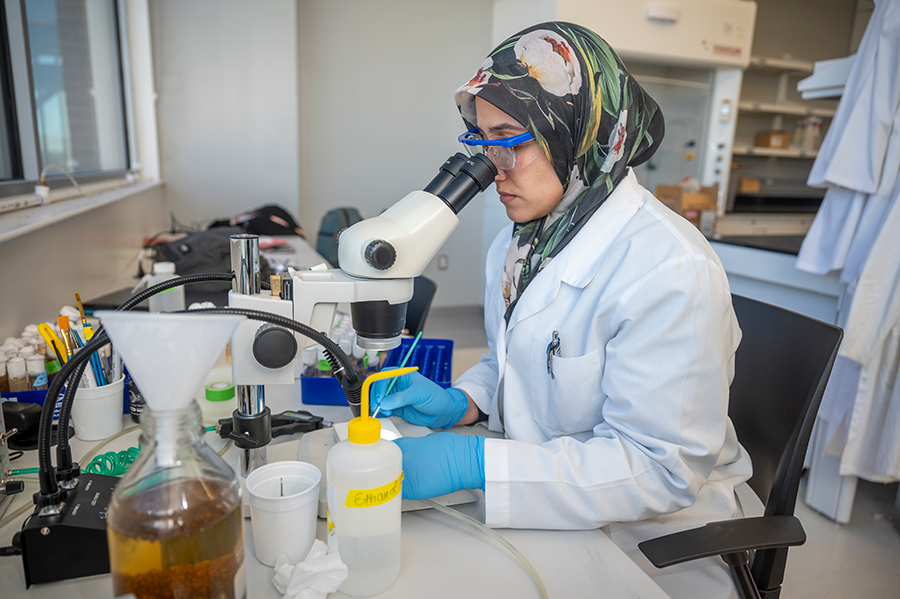
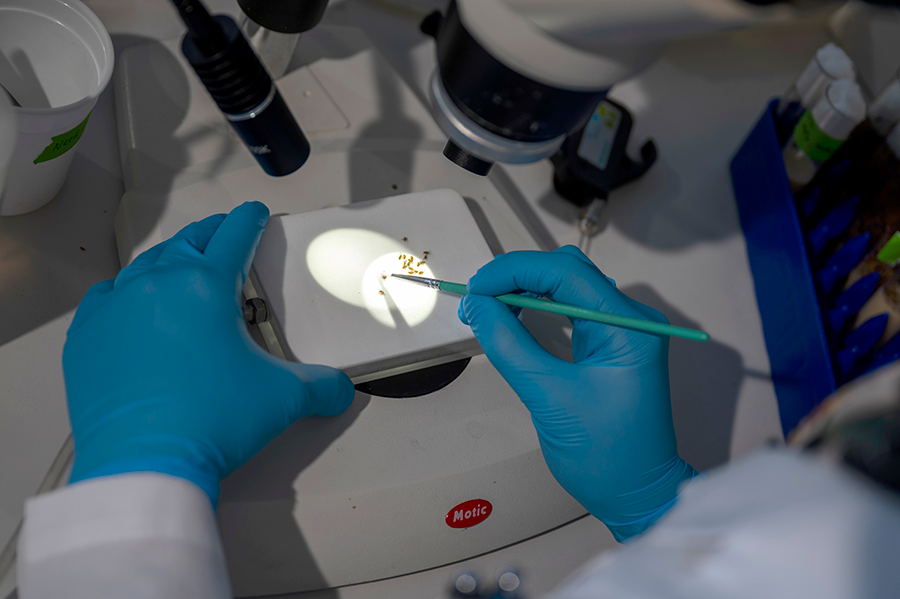
His research with other scientists has been published many times before, but this project was slightly different.
“I joined Augusta University in 2020, and this is really one big piece of what we’ve been working on as a lab. It’s one of the first publications as a lab we’ve produced, and it was kind of new because it took what we were doing in the fruit fly and combined that with computational work with Dr. Malmi-Kakkada,” Langridge said.
Abdul Malmi-Kakkada, PhD (pictured far right), is an assistant professor of physics at AU. Much of his work is centered on biophysics, and he collaborated with Langridge Lab on this research using his computational skills.
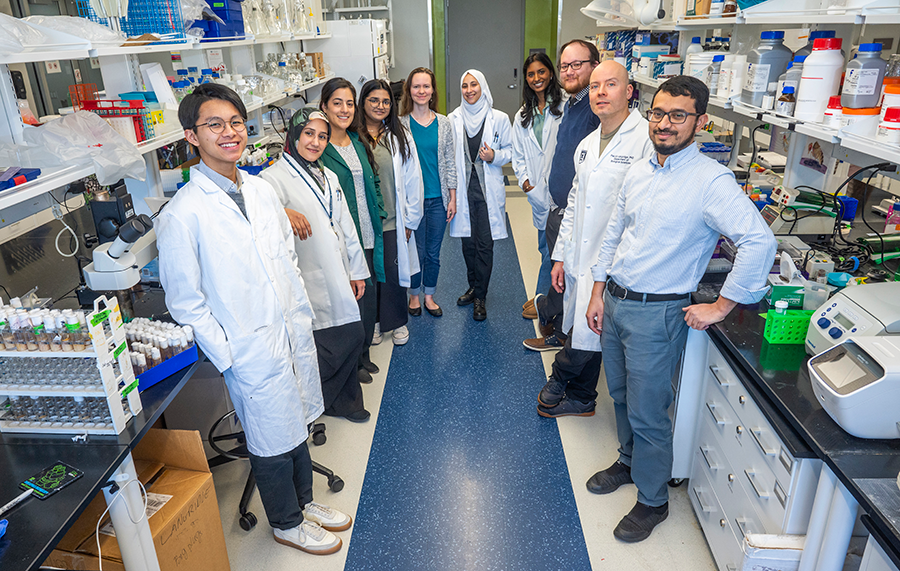
“The advantage of using a computational model is that it’s much more controllable. You can build a virtual model for what is happening in a much more complex system, like the fly,” Malmi-Kakkada said. “We are able to focus on specific aspects of the process, how the cells communicate with one another, and that’s how this project got started.”
The virtual model helped stabilize the research.
“You can test specific hypotheses for how the communication process should work,” Malmi-Kakkada said. “It’s much easier, quicker to do and cheaper to do. And then we can use that data to also predict aspects that the experimentalists can focus on, and that can better refine the experiments.”
Some of the patterns they discovered with the computational model were unexpected, but still reassuring.
“We observed from the virtual model that there was more of the output at the boundary layer of a group of cells, and then towards the center there was no expression of the output,” Malmi-Kakkada said. “So those kind of spatial patterns were quite surprising, but also matched what we were observing in the fly wing, so this gave us confidence that what we are predicting is on the right track.”
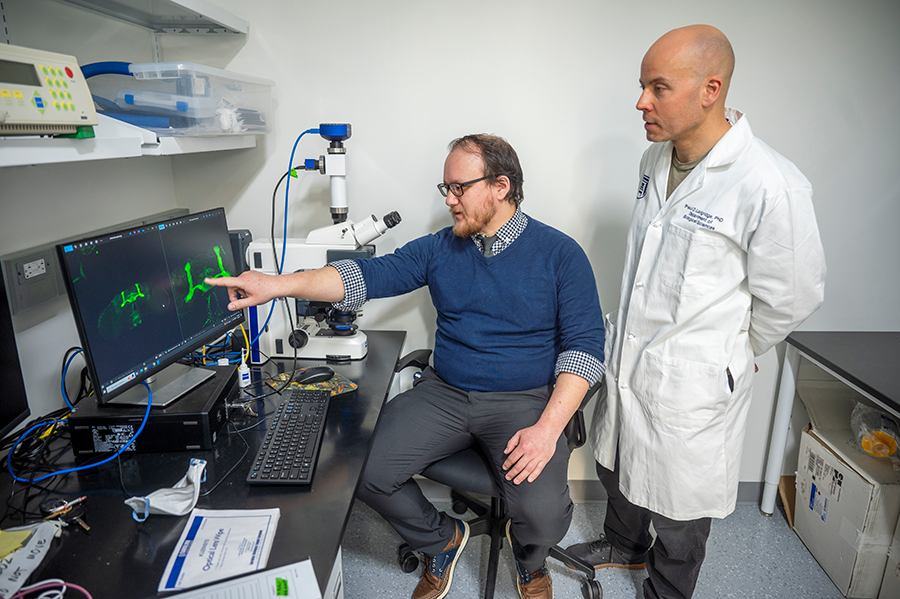
Shawn Macon, a third-year physics student at Augusta University, worked under Malmi-Kakkada on the project. His job was to examine the patterns displayed from the model, measure the contact length between cells and look at how it affected the output response.
It’s a tremendous accomplishment to be a published scientist before you’ve even graduated, and Macon being able to study phenomena that not much is known about has shifted his career path.
“I originally came in as a biology major, goal was med school,” Macon said. “Well, I ended up switching to be a physics major, and now trying to pursue more of a graduate school, maybe PhD, research-oriented career because this is more interesting and fulfilling to me.”
The publication impacted the future careers of students working under Langridge as well.
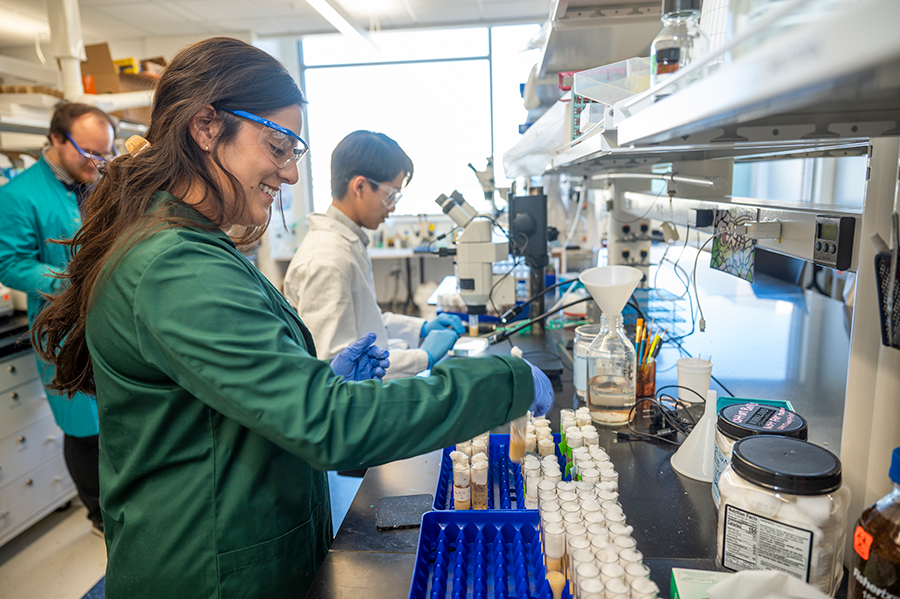
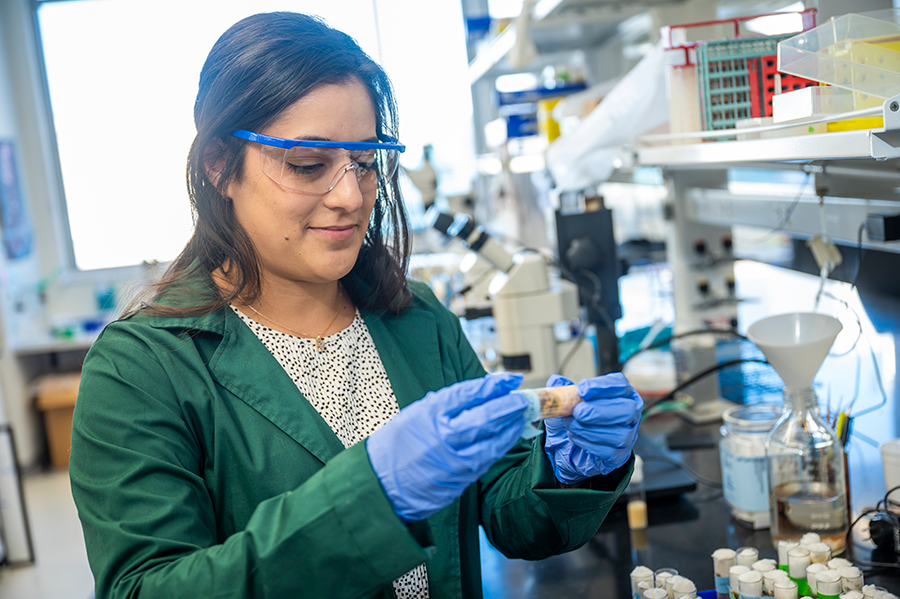
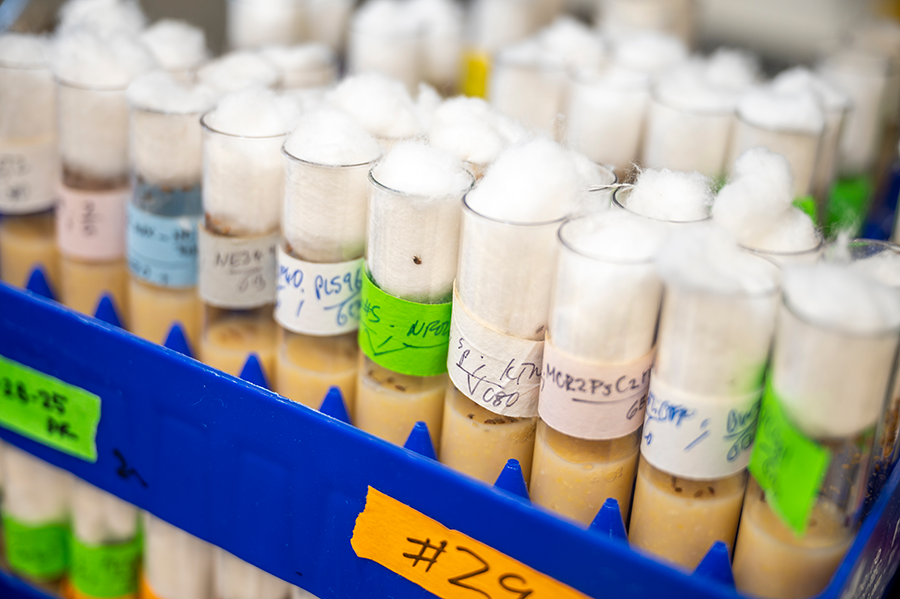
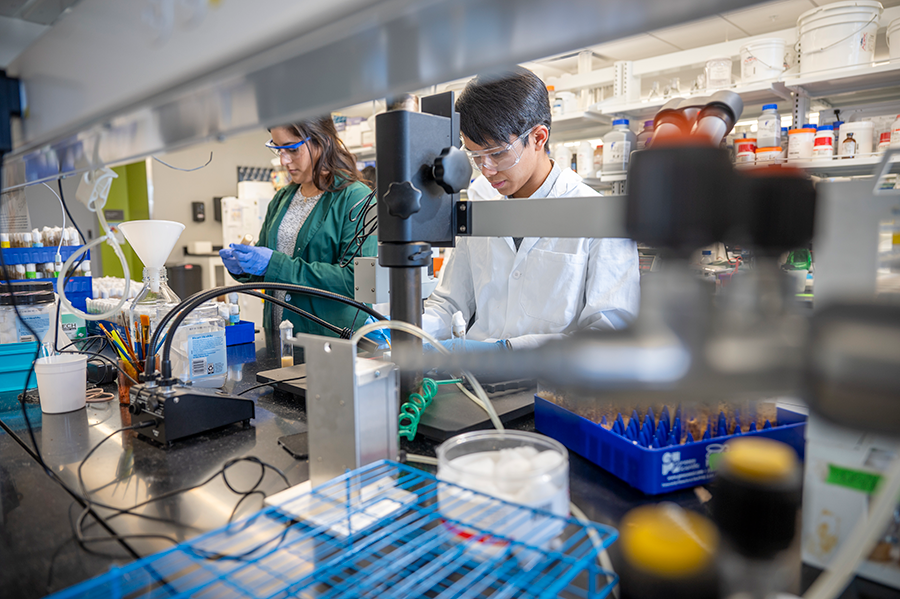
Simran Bhikot, an undergraduate fourth-year biology honors student at AU, joined Langridge Lab during her freshman year. She was tasked with day-to-day operations regarding research.
“I honestly have no words for it. It’s really cool to have this opportunity, and a lot of people don’t really get to do this kind of stuff. It’s been really good having research opportunities for undergrads, and it’s definitely made me consider research as a possible career opportunity,” she said.
“I was able to see it from the beginning to the end – I think that’s really, really awesome.”
Amber Ajamu-Johnson
Breana Walton and Amber Ajamu-Johnson completed their master’s degrees in biomolecular science while working for the lab. Walton is now a lecturer in the Department of Biological Sciences at AU, and Ajamu-Johnson is a biomedical science PhD student at AU.
“We all kind of helped each other. [For the computational work] they needed to measure the signals and the extent of it. So it was important that they were able to see the cell borders of each cell so they could see how far things are going,” Walton said. “What we had to do was stain the cells. The staining just basically attaches to the molecule that we want to visualize so under the microscope we can see it. I worked with getting some of those stains done correctly, so that the cell borders would be visible for the math computational folks to measure them.”
“Dr. Langridge was writing a lot of it, and so a lot of times it was the students really grinding out in the lab because he was so busy writing. And I was able to see it from the beginning to the end – I think that’s really, really awesome,” Ajamu-Johnson said.
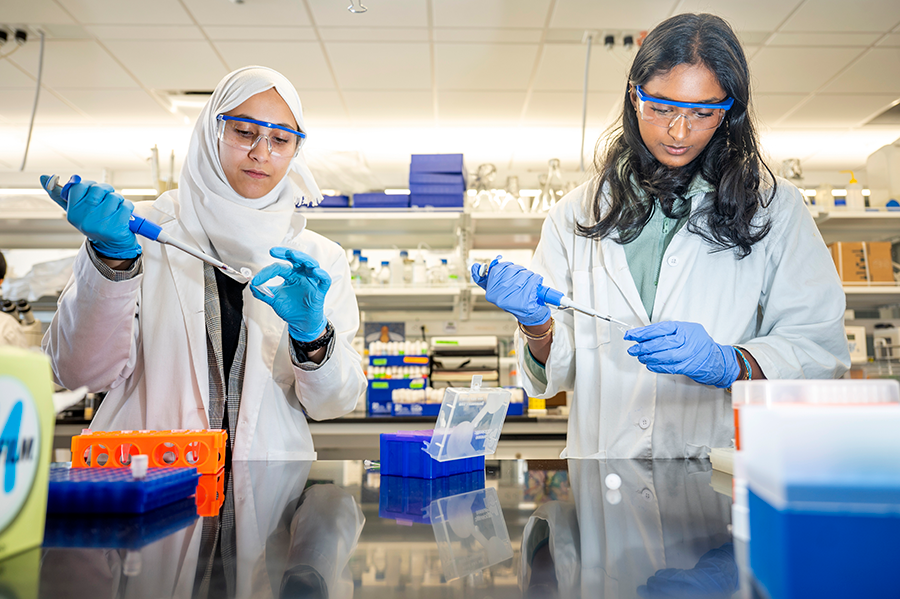
With one project coming to an end, another is just beginning. Malmi-Kakkada Lab is now working on understanding how the cell communication pathways can be used to enhance how immune cells recognize and kill tumor cells.
And the next objective for Langridge Lab is creating a Course-based Undergraduate Research Experience, or C.U.R.E.
Langridge wants to expand the research his lab conducts and incorporate it into a classroom setting. He said the course will be called Build Your Own Signaling Pathways, and will be available to cell biology and advanced cell biology students in fall 2025 or spring 2026.
“The idea is that we can give many more students and undergraduates, including those that might not necessarily be involved in research in a dedicated lab, the opportunity to actually contribute real research data to a project that’s part of a class that people can register and get academic credit for.”
 Augusta University
Augusta University
